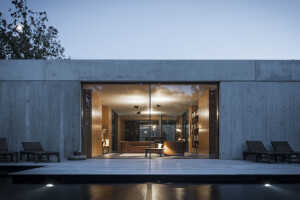Bold refurbishment of 'Art Moderne' landmark in London gets go-ahead from planners
Architects and designers, Orms, have secured planning consent (subject to a section 106 agreement) for the refurbishment and extension of Commonwealth House, a familiar mid-town London landmark. The nine storey prow clock tower of the 1939 building is an unmistakable feature on the corner of New Oxford Street and High Holborn. Originally designed by architect and planner Henry Philip Cart De Lafontaine as an ‘ultra-modern building of imposing appearance’ the refurbished building will provide 12,250 sqft of retail and 95,000 sqft Grade A office space for client TIAA Henderson Real Estate (TH Real Estate), and position the seventy five year old Grand Dame for a new generation of office occupiers. Orms imaginative transformation will make Commonwealth House as distinctive and stylish as first envisaged by LaFontaine. Externally, the prominent ‘prow’ and the oriel windows will be clad in the hexagonal green tiles originally proposed by Lafontaine, but not permitted by Giles Gilbert Scott who was the advisor to the Crown and who considered the tiles ‘an innovation’. All the ground floor retail units will be replaced by shop fronts informed by the Art Moderne period of the building’s creation. John McRae of Orms said “Our response is a carefully considered piece of architecture that is not merely a superficial refurbishment but one that is in keeping with the spirit of the original design and will help to secure the building’s long term future. We listened to the client, we listened to the building and through our research uncovered documents and letters that informed our understanding of Lafontaine’s original ambitions for the building. The building sits on a triangular site at the edge of the Tottenham Court Road Growth Area and Bloomsbury Conservation area. The upgrading of Commonwealth House will continue the re-energising of this part of mid-town, already transformed by Renzo Piano’s colourful Central St Giles building, and the Old Sorting Office across the street. Orms’ intention to reinstate the green tiles as in the original vision won praise from local groups who commented: “It is unusual for us to see schemes which are both uncontentious and very well researched. We were impressed with the degree of research into the original intentions of the architect Lafontaine, and welcome the proposal to install the green tiles considered too risqué by the Crown Estate at the time” Other key moves include the insertion of a bank of lifts and bridge decks into a new, full height glazed atrium at the heart of the building, and a new double height entrance and reception on New Oxford Street. A single story 9th floor rooftop extension is set back from the street between the two brick cores. Planning permission was received following an extensive consultative process with the Camden Borough Council’s officers, Bloomsbury Conservation Area Advisory committee, The Seven Dials Trust, Bloomsbury Society, Covent Garden Community Association and local business groups. Orms has designed a scheme for the St Giles area, which, with the advent of the Crossrail station on Tottenham Court Road, Piano’s building, and with the transformation of Commonwealth House, will secure the future for this London quarter.




























